Pre-Civil War Gothic Revival Church on Bed Stuy’s Willoughby Avenue Demolished as Locals Look On
The historic St. Lucy-St. Patrick Roman Catholic Church was being torn down in clouds of dust Monday and today to make way for housing.

St. Lucy-St. Patrick Roman Catholic Church on Willoughby Avenue was being demolished Monday and today. Photo by Anna Bradley-Smith
The historic St. Lucy-St. Patrick Roman Catholic Church, which has dominated a block of Bed Stuy’s Willoughby Avenue since 1856, was being torn down in clouds of dust Monday and today to make way for housing.
The demolition of the red-brick Gothic Revival church building at 920 Kent Avenue (also known as 295 Willoughby Avenue) and a petite attached three-story mansard-roofed Second Empire/Italianate structure are the latest in a string of demolitions of religious buildings along the thoroughfare. The church’s four-story mansard-roofed Second Empire/Italianate rectory at 285 Willoughby Avenue, on the corner of Taaffe Place, was spared the wrecking ball.
While Monday’s demolition wasn’t a total surprise after Williamsburg-based developer Watermark Capital Group in July entered contract to buy the two sites, the demolition still had passersby in shock.
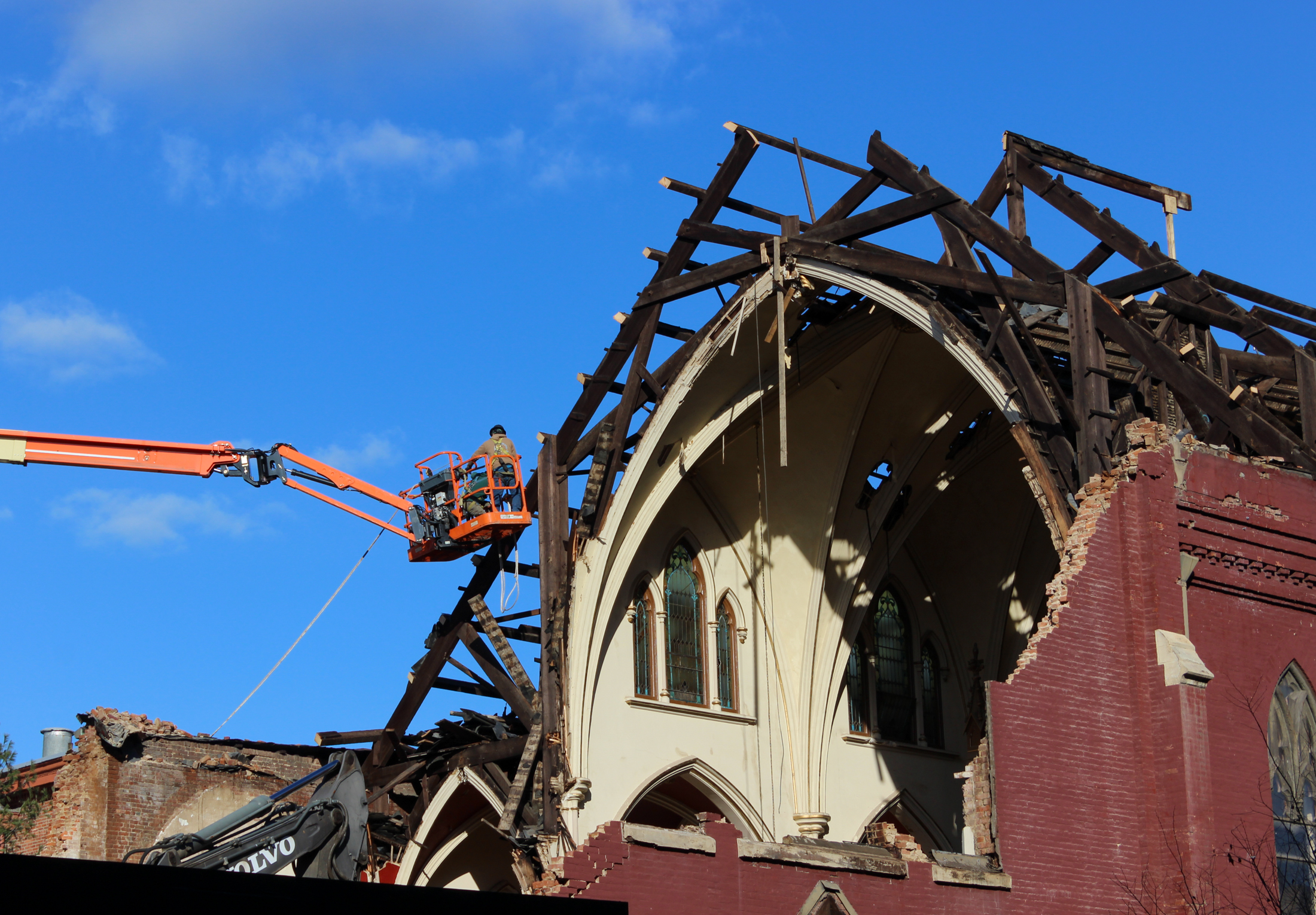
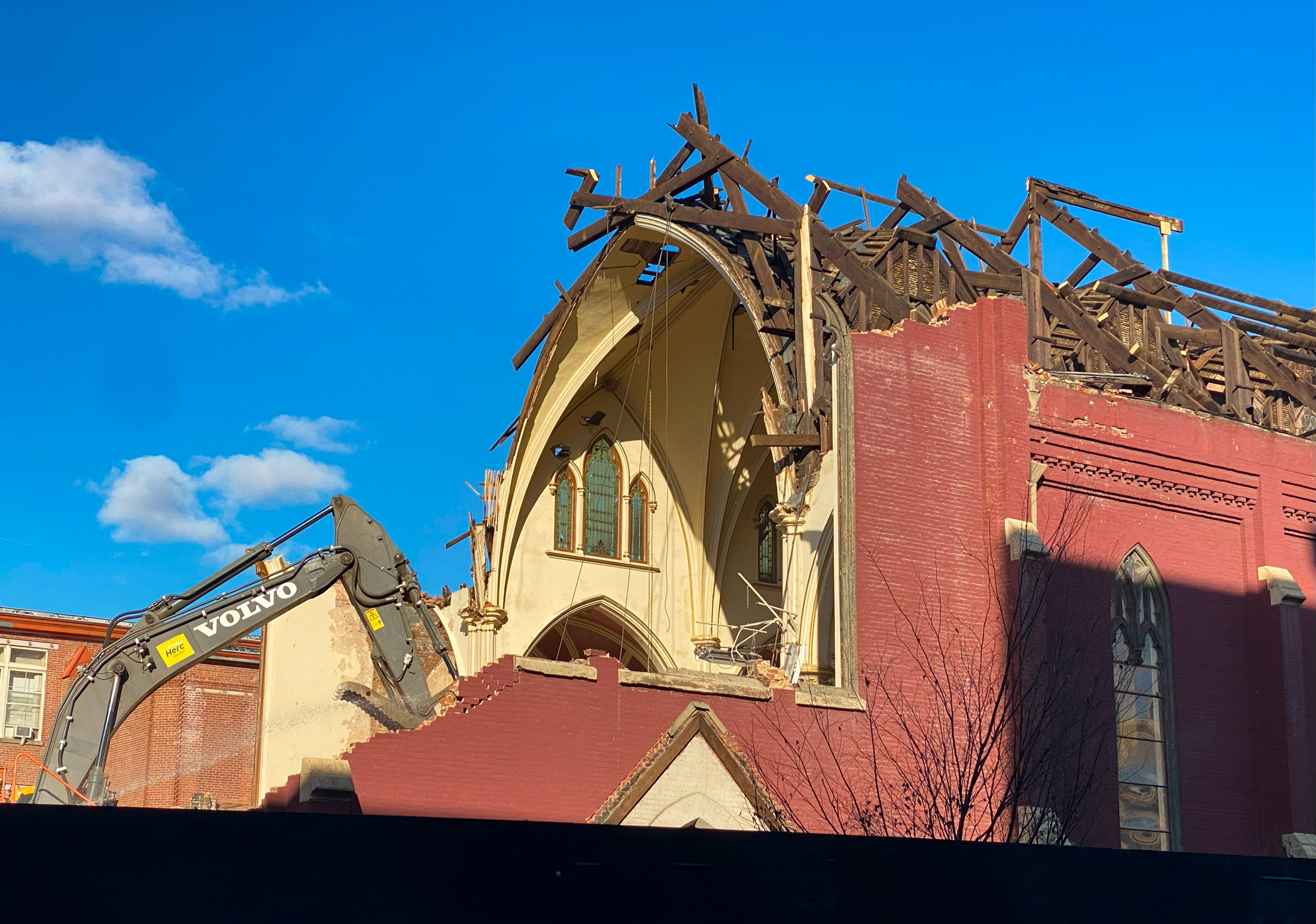
Marisa Lee, and many others who stopped to watch sections of the historic church come crumbling down, said she wished there was a way to save elements of the church and incorporate them into whatever came next. “It’s a shame,” she said. “It’s sad.”
It didn’t appear much had been salvaged of the building’s more than 160-year-old elements, with stained glass windows and the decorative wooden detailing around the organ falling into the pile of rubble as the excavator tore through.
The Roman Catholic Church of St. Patrick was able to “salvage religious patrimony” from the church and rectory buildings before the closing of the sale to Watermark Capital Group, according to court filings supporting the sale. The petition filed by the church says it had debts that more than quadrupled its cash assets.
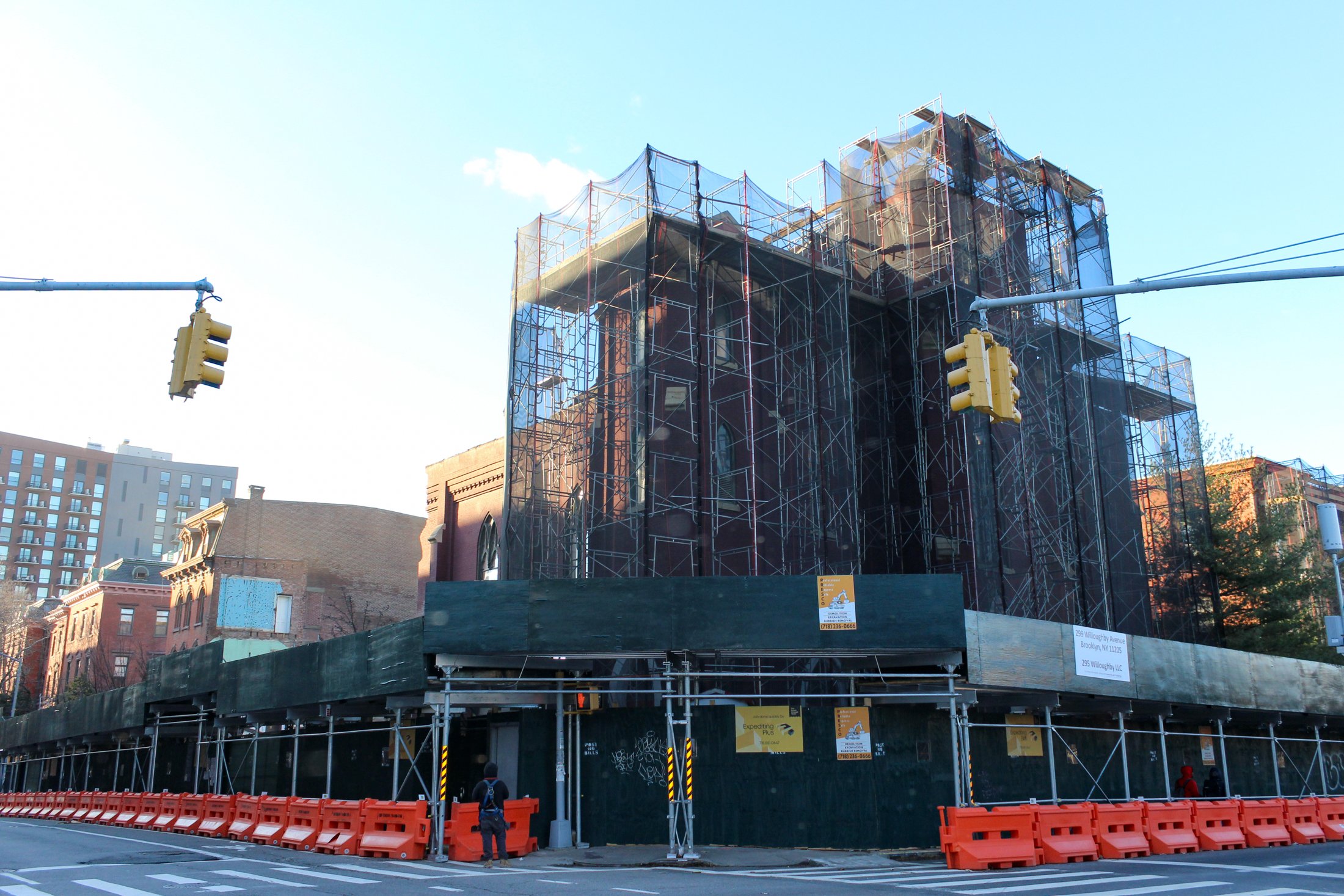
A permit to demolish the church — described as a one-story building at 920 Kent Avenue/299 Willoughby Avenue — using mechanical means such as an excavator was issued in November. It’s unclear whether that covered the three-story section of the rectory that was demolished, given there was no separate demolition permit issued for the building, but PropertyShark shows the church and smaller rectory building as one building on one lot.
Watermark Capital Group, through 295 Willoughby LLC, purchased the rectory at 285 Willoughby Avenue for $3 million and the church building for $9.25 million in November, city records show.
The developer’s projects in Brooklyn include a 19-story apartment tower that replaced a one-story church at 321 Wythe Avenue in Williamsburg and the adaptive reuse of an historic school at 125 Eagle Street in Greenpoint, a Romanesque Revival building that lost its distinctive gable and front entrance after 2012, old photos show.
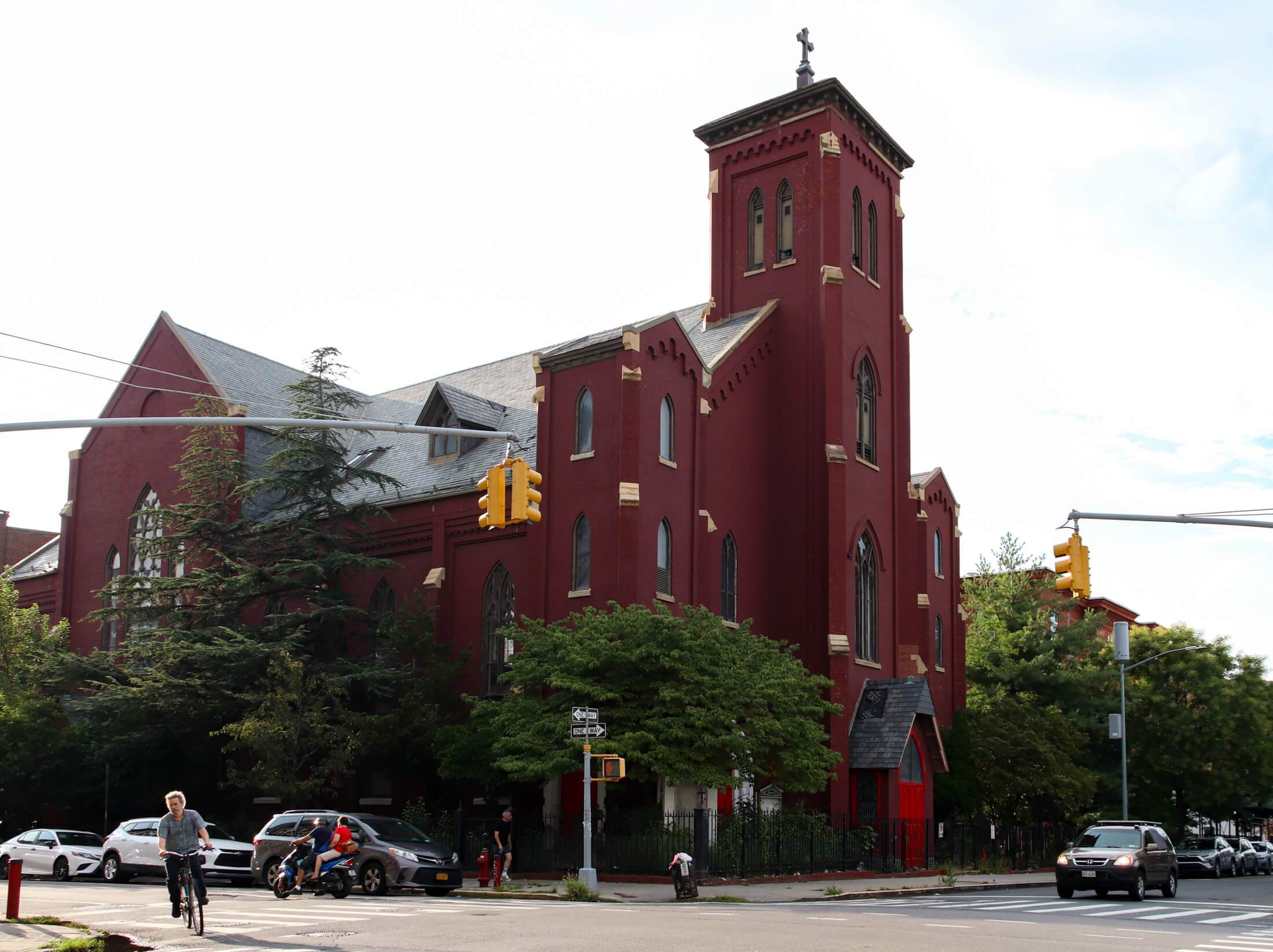
It’s not yet clear what the developer’s plans are for the large site. Under the address 920 Kent Avenue/299 Willoughby Avenue, one new-building permit application has been filed for a two-family four-story house taking up just a fraction of the property. The size of the lot and the R6B residential zoning means a building almost three times bigger than the church could go up. Potentially the developer could plan a group of townhouses as well as a bigger apartment building.
Meanwhile, the mansard-roofed rectory at 285 Willoughby Avenue that was spared the wrecking ball already exceeds its allowable FAR (floor area ratio). The sale of the church and the rectory appears to have included air rights from 918 Kent Avenue, a neighboring church building that is now affordable apartments.
City records show prior to the sale, the Roman Catholic Church entered an agreement with St. Lucy-St. Patrick Housing Development Fund Corporation, 918 Kent’s owner, to create one tax lot from the three sites at 918 and 920 Kent Avenue and 285 Willoughby Avenue. The agreement gives both parties increased development rights, documents show.
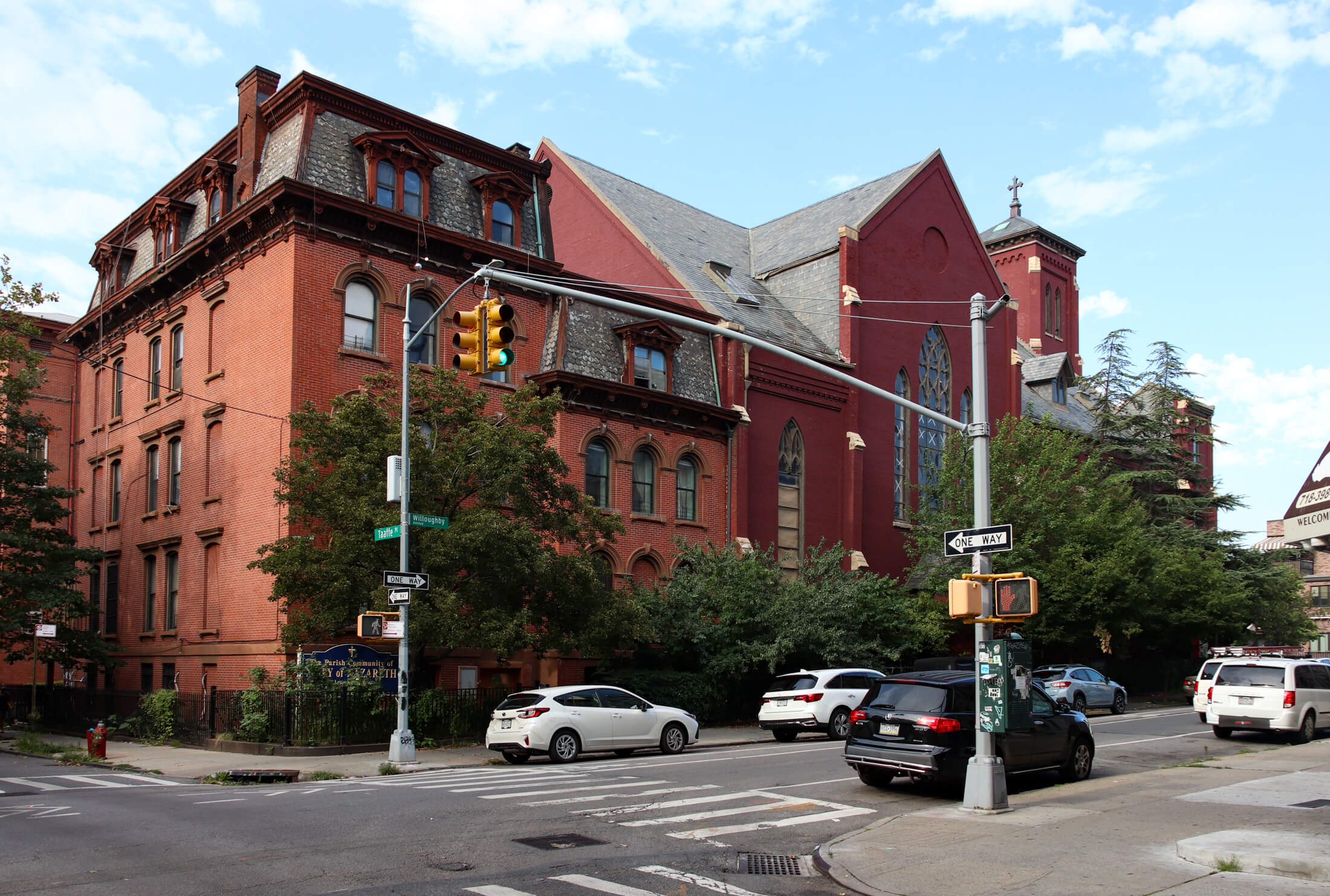
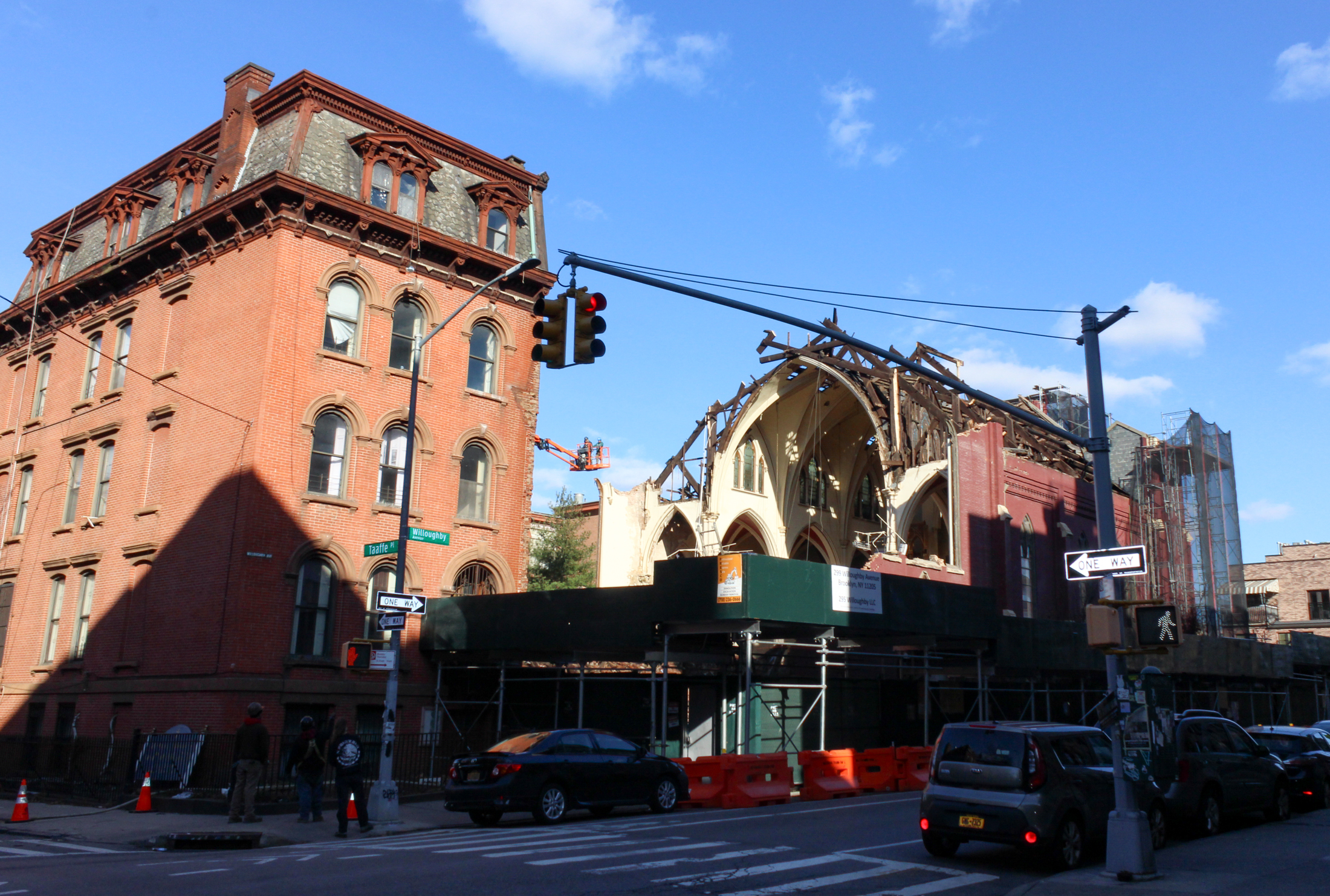
The church, which was initially just St. Patrick, was completed in 1856 and designed by architect James J. Lyons, according to newspaper accounts of the time. The rectory went up around 1875, according to the Real Estate Record. In the 20th century, the church combined with St. Lucy to become St. Lucy-St. Patrick Roman Catholic Church.
The site is just outside the Clinton Hill Historic District and is part of what was once a three-block span down Willoughby Avenue of stately 1850s and 1860s red brick and brownstone buildings owned by religious institutions.
It is the latest in a years-long building sell off by churches all over the borough, which have faced declining attendance and deteriorating structures while property values have skyrocketed. Many have been demolished for new housing, but in some cases buildings are altered or extended, and occasionally preserved and adapted for new uses.
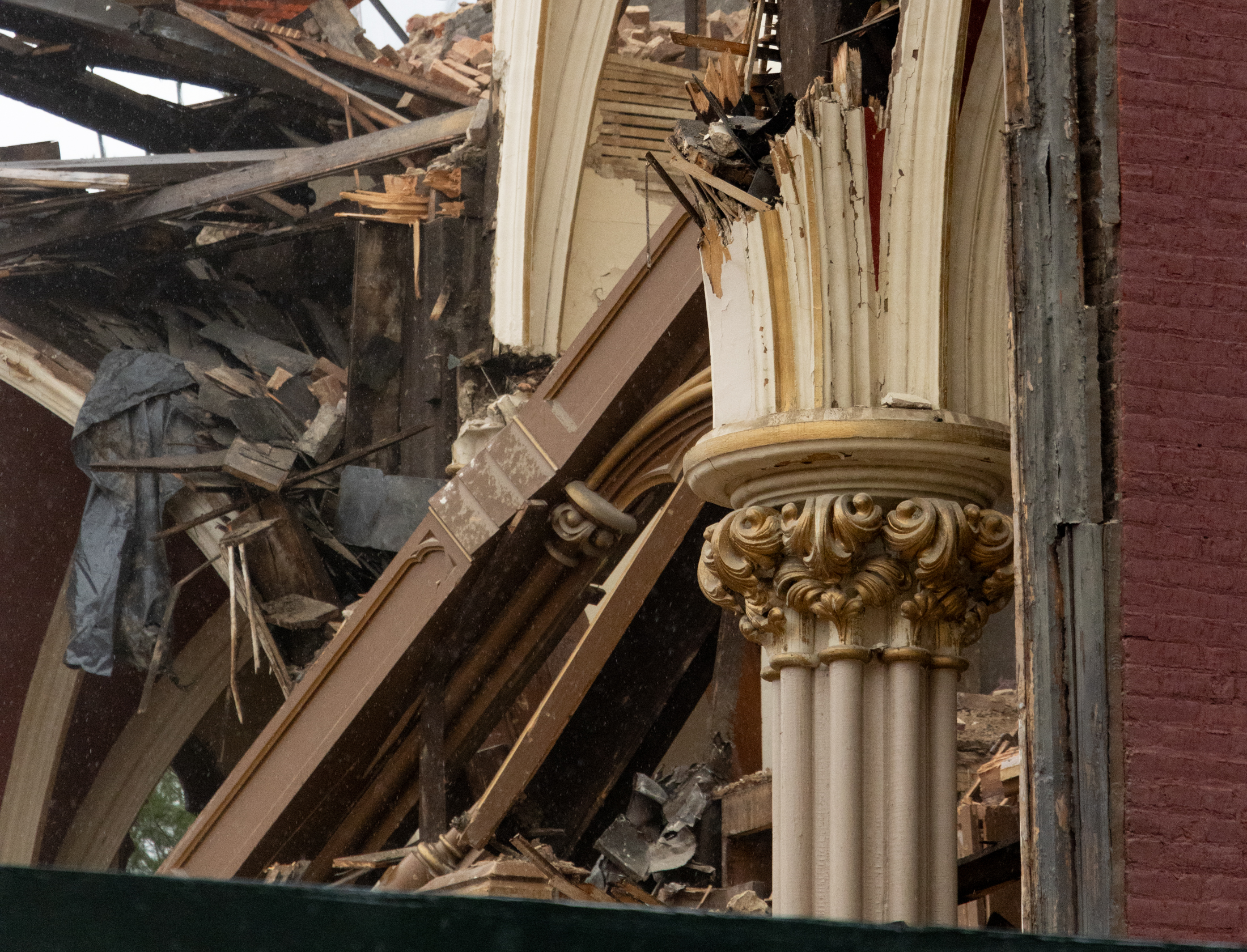
[Photos by Anna Bradley-Smith unless noted otherwise]
Related Stories
- Pre-Civil War Gothic Church Faces Wrecking Ball to Make Way for Apartments in Bed Stuy
- Clinton Hill Parish House Demolished, 17-Story Tower to Rise Above Landmarked Church
- Locals Testify in Court in Effort to Stop Greenpoint Lutheran Church Sale
Email tips@brownstoner.com with further comments, questions or tips. Follow Brownstoner on Twitter and Instagram, and like us on Facebook.

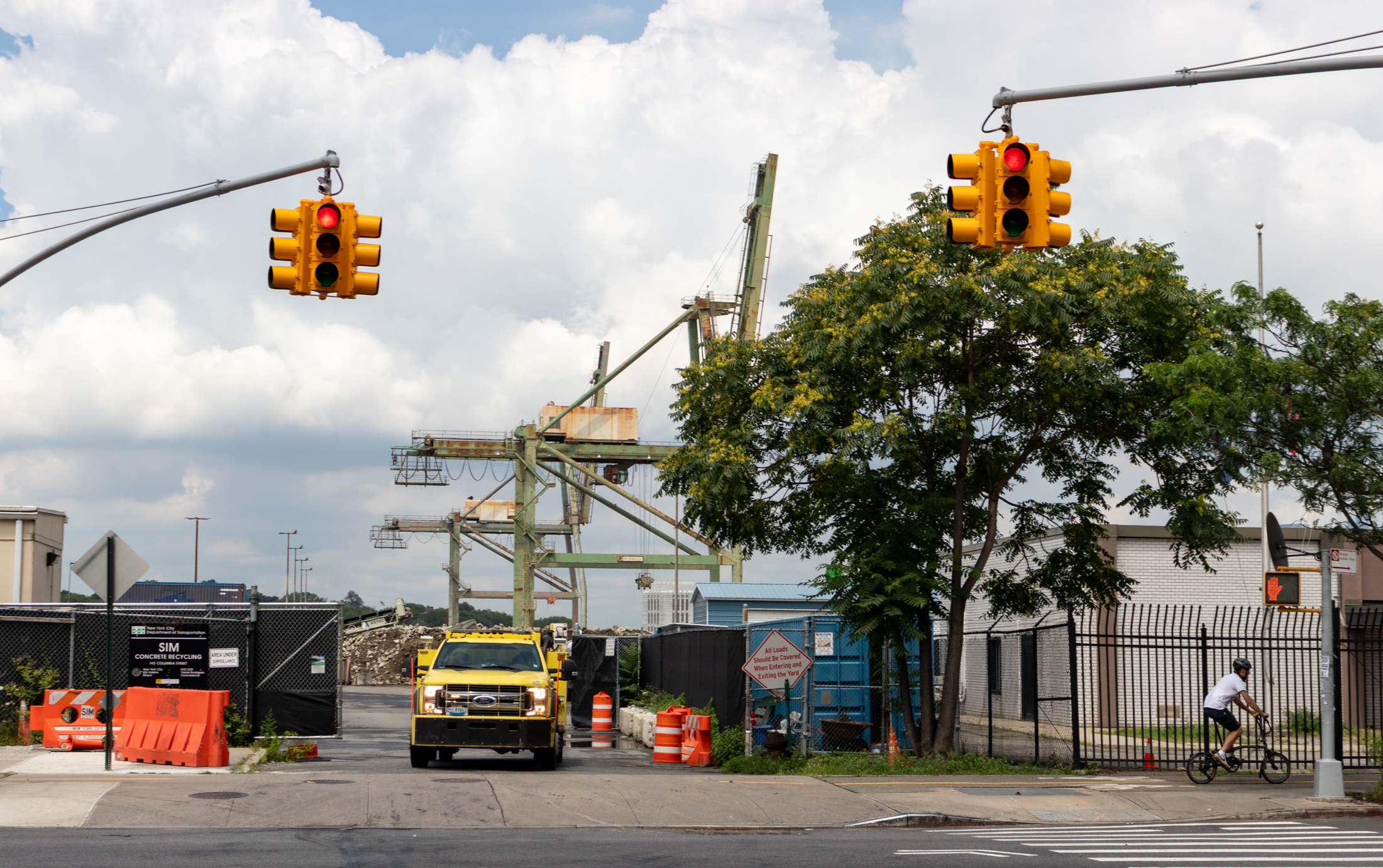
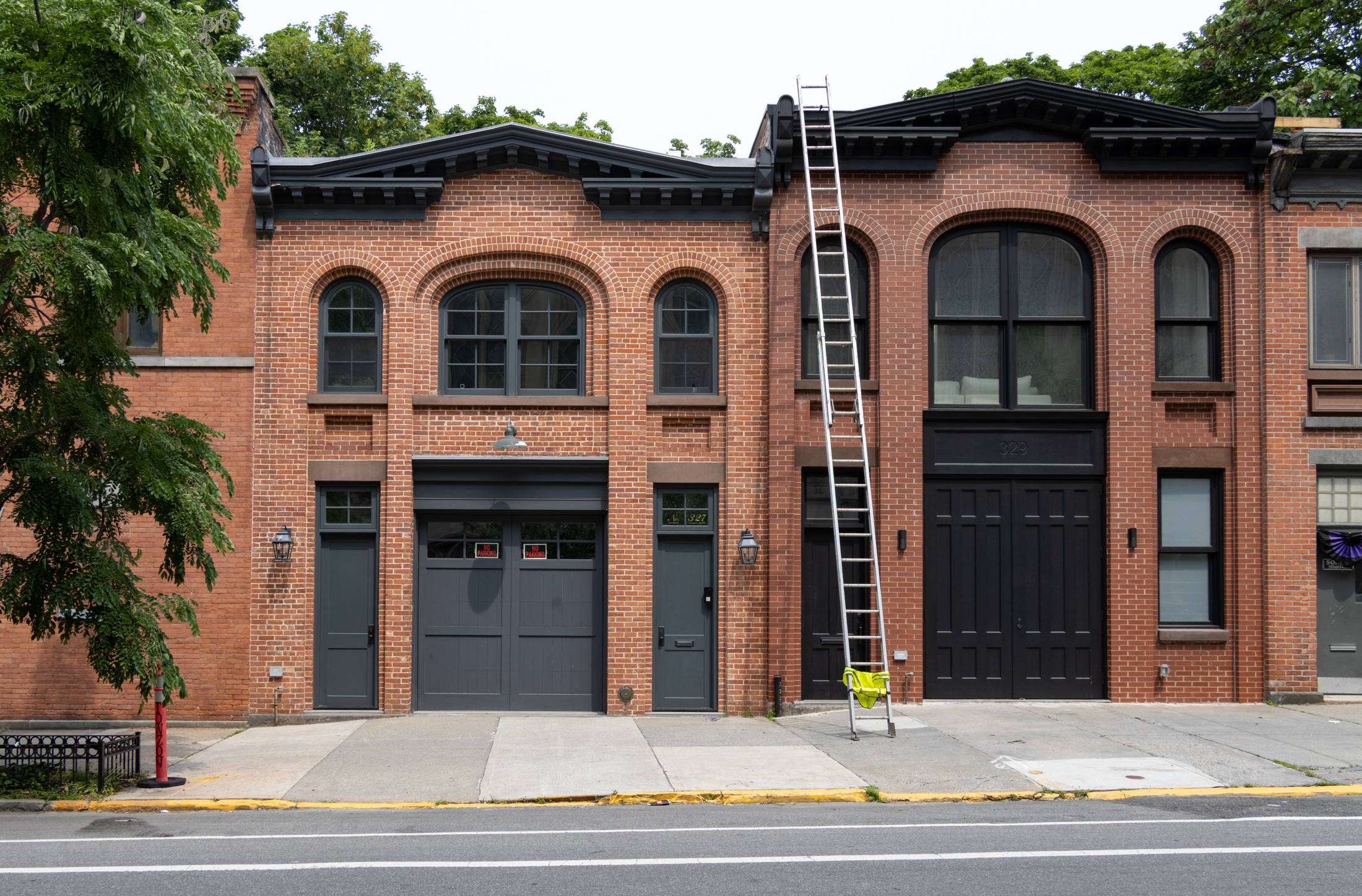


This was heartbreaking to watch.